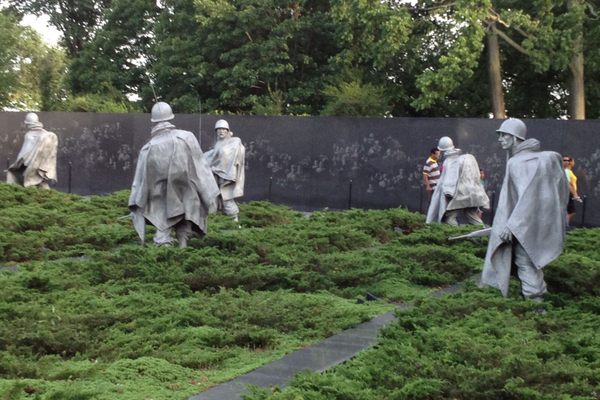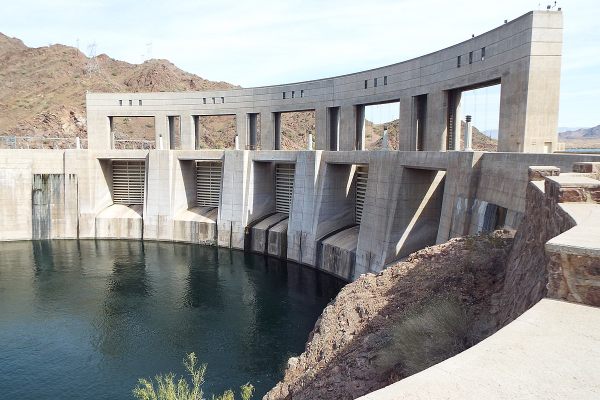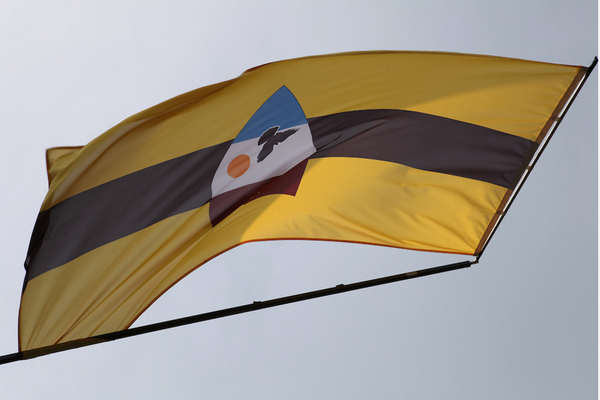Alexander's Island Border Dispute
The Pentagon sits on a former island that was in Virginia at low tide and D.C. at high tide.
The area presently occupied by the Pentagon’s Connector Parking Lot was once an island that had the rare distinction of being part of Washington, D.C. during high tide, and Virginia at low tide. The controversial locale was known as Alexander’s Island, after the Alexander family that owned a plantation in the area.
D.C.’s watery boundary is defined as the far side of the Potomac, not the middle of the river. And during high tide the Potomac rises three feet, which flooded marshland and completely circled Alexander’s Island, making it part of D.C. But during low tide the waters receded into a tiny creek known as Roache’s Run and the “island” appeared very much attached to Virginia. The practical effect of this was that Alexander’s property switched jurisdictions once a day in tracking with the tidal charts.
Unsurprisingly, this jurisdictional oddity elicited strong opinions from public policy officials on either side of the river, and it was only settled after four decades of contradictory legal decisions and a Congressional investigation. The matter first came before the courts way back in the Grant Administration when E.P. Jones built a horse racing track on Alexander’s Island. Horse betting was illegal in the District, but permitted in Virginia. A Virginia Judge named Chambers greenlighted the racetrack, setting a precedent that Alexander’s was part of the Commonwealth.
The “District-Virginia Border Dispute” popped up continuously over the years, but really came to a head in 1932. D.C. authorities wanted to compel the Potomac Electric Power Company to bury their power lines around the Hoover Airfield that now operated out of Alexander’s Island. The legal question arose again: Did District regulators have authority? This time the House Judiciary Committee took interest in the case and held a week of day-long hearings on the subject.
The pro-D.C. side reached back through 300 years of legal records and produced the grant that King Charles I gave Lord Baltimore in 1632, which defined the boundaries of colonial Maryland, and included Alexander’s Island. Since the District of Columbia exists entirely on land carved out of Maryland, this suggested that Virginia’s claim on the land was bunk.
On the other side of the debate, Virginia Congressman Andrew Montague’s complained that the Commonwealth was being defrauded by “the infamous rascality of Lord Baltimore” and the line “should have been the middle of the Potomac River.” It was also pointed out that D.C. police refused to patrol the Island, implicitly suggesting it was out of their jurisdiction.
In the end the Judiciary Committee Chairman was so flummoxed by the contradictory arguments and precedents that he ended up touring the area in person before deciding that it was in fact a Potomac Island, and part of Washington, D.C.
The Congressional ruling had amusing timing, because just a decade later the Pentagon was built on part of the controversial land. The marshy Roaches Run was covered with landfill and permanently attached to the Virginia landmass, eliminating the rationale for the pro-D.C. decision. As a result, the Pentagon has a D.C. mailing address to this day despite obviously being on the Virginia side of the Potomac.
Know Before You Go
At its largest, Alexander's Island once occupied a broad area in between the present-day Pentagon, Reagan National Airport, and Lady Bird Johnson Park. Dramatic landscaping and dredging carved out the center of the land, creating the Boundary Channel and Pentagon Lagoon. Coordinates mark the National Park Service educational plaque by the lagoon footbridge, roughly at the center of the old island.

















Follow us on Twitter to get the latest on the world's hidden wonders.
Like us on Facebook to get the latest on the world's hidden wonders.
Follow us on Twitter Like us on Facebook